|
|


Blueberries belong to a well-travelled family, going back a long way in
time and place. Perhaps, who knows, even to the Garden of Eden.
Today, a relative of the blueberry plant is the oldest living thing on
earth, estimated by botanists to be more than 13,000 years old.
Skipping ahead from Adam and Eve, it is recorded that Virgil and Pliny
recongized blueberries. However, they didn't call them blueberries -
they used the term which still identifies the blueberry plant,
VACCINIUM, a word rooted in the Latin "vaccinus" meaning cow. The
connection between cow and blueberry is indeed obscure, but perhaps
ancient cows were blueberry eaters.
 Like the
world's bears, they probably knew that blueberries were a feast, a
delicacy. Wild bears will eat nothing except the succulent, juicy
blueberries when they are in season. It has been documented that they
will travel, with an empty stomach, from ten to fifteen miles per day
to sniff out a blueberry patch. Like the
world's bears, they probably knew that blueberries were a feast, a
delicacy. Wild bears will eat nothing except the succulent, juicy
blueberries when they are in season. It has been documented that they
will travel, with an empty stomach, from ten to fifteen miles per day
to sniff out a blueberry patch.
Blueberries grow in many places around the world. Cousins of our native
North American blueberries live in Asia, Europe and South America, from
the tropics to the land of the Eskimos. But our blueberries did not
travel from far-away places to get here. They are not escapees from
early Colonial gardens. Nor are they immigrants whose seed came over on
the Mayflower.
Blueberries were here when the first wave of settlers arrived in what
was to become America. Early explorers noted Wild Blueberries on their
expeditions. In 1615, Samuel de Champlain saw Indians along Lake Huron
harvesting Wild Blueberries. These were dried, beaten into a
pulp/powder and combined with cornmeal, honey and water to make a
pudding called "Sautauthig". Lewis and Clark, while on an expedition
found that Indians smoked Wild Blueberries to preserve them for winter
use. A meal served to them by the Indians had Wild Blueberries pounded
into the meat -- which was then smoked and dried.
The American Indian held the wild blueberry in very high esteem, due to
the fact that the blossom end of each blueberry forms a five points
star. It was believed the "Great Spirit" sent these star berries to
relieve the hunger of children during a famine. Indians also used
blueberries for medicinal purposes and made a strong aromatic tea from
the root. It was used as a relaxant during childbirth. Early medical
books show this same tea was used by wives of settlers during labor.
Blueberry juice was used for "old coughs" and tea made from Wild
Blueberry leaves was believed to be a good tonic to help purify the
blood.
The small Wild Blueberry, to the original settlers, was less foreign to
them than the land. Some had known a similar berry in Scotland, the
blaeberry. Blaeberry jam, the story goes, was invented in the court of
James V, who became King of Scots in 1513. His French wife brought her
own cooks when she arrived at the castle in Scotland. They harvested
the local wild blaeberries and in typical inventive French gourmet
fashion, devised a delicacy which still delights Scottish palates.
English immigrants related the New World blueberry to their
whortleberries: the Danes, to bilberries; the Swedes to their
blåbär. People from northern Germany recognized their
bickberren; those from southern Germany, blauberren. Later arrivals
from Europe, such as the Russians, also had a frame of reference for
these berries whose blue reflected the promising blue skies of the New
World. The first commerical venture involved canning Wild Blueberries
for the military. |
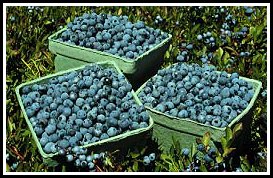
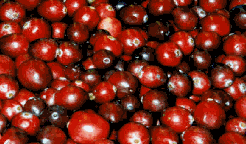
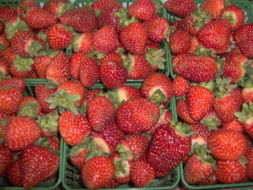
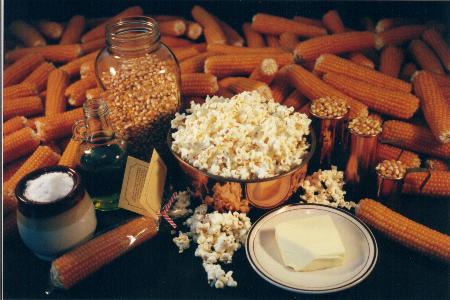
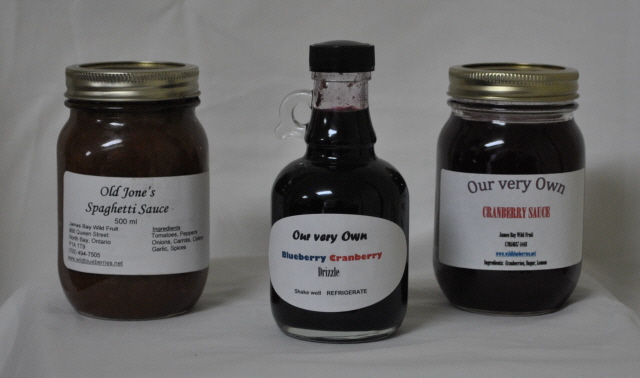
|